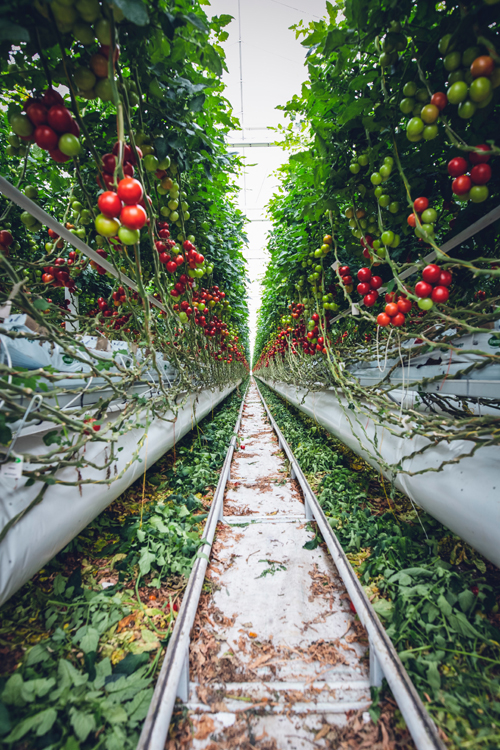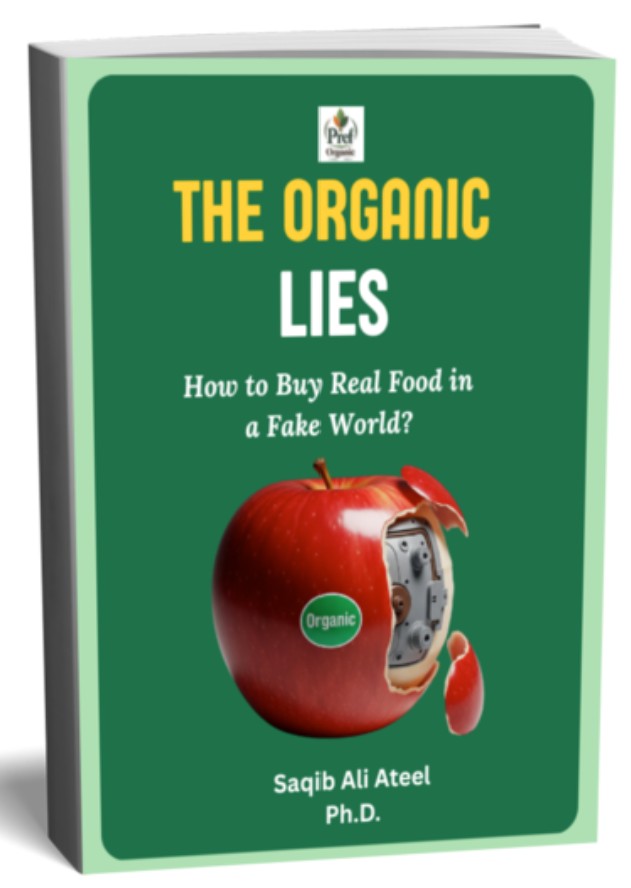Organic Farming: A Simple Method to Help Humans and Environment Simultaneously

By: Dr. Salman Ahmad, Ph.D. Agronomy
Salmanahmedbwp@yahoo.com
Organic farming is getting the attention of governments all over the world. According to the World Health Organization (WHO), an abrupt increase in diabetes, obesity, cancer, and specific allergies is mainly due to the processed diet, lifestyle and unhealthy environment. Today's crop production system primarily depends on synthetic chemical substances (particularly fertilizer and pesticides). These products cause environmental pollution, but their residual effects are also harmful to human and animal health. This situation can be changed by modifying lifestyle and consuming healthy food, which can be achieved by adopting Organic Farming.

Organic farming is the production of crops without using chemical additives (fertilizer, pesticide, etc.). The main aim of this technology is to improve human and environmental health. Organic products are preferable due to better nutrition value, taste, minimum residual chemical effects and their role in reducing the environmental pollution. Organic farming works under the principles of nature. Crop nutrition requirements can be fulfilled by maintaining soil organic matter contents with natural fertilizers (manure, composts) and growing leguminous crops. Similarly, protection against pest/ diseases can be achieved by adopting preventive, biological (friendly insects) and non-chemical (manual or mechanical) methods. Biopesticides and some synthetic pesticides, which are not harmful to the environment and crop friendly insects, can also be used in organic farming (Encyclopedia of Food and Health, 2016).
Although the area under Organic crops occupies only 1% of the global cultivated area, it is still one of the fastest-growing agriculture sectors (250% increase in the last ten years). Globally about 71.5 million hectares are under organic products by the end of 2018. Oceania has the largest organically cultivated area (36 million hectares), followed by Europe (15.6 million hectares) and Latin America (8.0 million hectares). According to a survey, there are 2.8 million organic producers from 180 countries worldwide (FAO, 2018). India is the leading country in terms of organic producers, followed by Uganda and Ethiopia. The global market for organic food has exceeded from 100 Billion US $. United State is the top market for organic products, followed by Germany and France (FAO, 2018).
Organic Farming Produces Healthy Food
There are more than 200 different diseases associated with food. In the agriculture sector, about 1000 pesticide used worldwide to protect the crops from pest/diseases. Residual effects of these pesticides persist on these products. Even at a very low dose, exposure to these chemicals can cause cancer and allergies, especially in pregnant women, breastfeeding mothers and children. An increasing portion of organic food in breastfeeding females' routine diet can decrease pesticide residues' contents in their milk. Similarly, blood and urine samples of children consuming conventional products showed six times more organophosphate pesticide residues than children consuming organic products.
Inorganic fertilizers, pesticide, and non-treated sewerage water increase heavy metal concentration in soil and plants. Studies show remarkable differences in heavy metal (mainly cobalt, copper, nickel, manganese) concentration in organic and inorganic food, especially cadmium concentration, is significantly lower (about 48%) in organic plants. Cadmium is a very toxic metal, and its slightly higher concentration in food may cause anaemia, bone diseases and circulatory problems. On average organic fruits and vegetables contain 5.5% higher mineral elements (zinc, iron, potassium and phosphorus) than conventionally grown fruits and vegetable.
Consumption of food rich in secondary metabolites like flavonoids, phenolic acids, carotenes, and terpenoids boosts the immune system. It prevents the development of lethal diseases like cancer, atherosclerosis and strengthening the walls of blood vessels. A meta-analysis of 343 studies shows a higher concentration of these secondary metabolites and antioxidants in fruits and vegetables grown organically than commercially available fruits and vegetables. Organic crops also contain 6% more vitamin C than inorganic crops. Although the amount of protein is slightly low in organic produce, organic food quality is superior due to the higher contents of essential amino acids like methionine, lysine, and cysteine.
Proteins in organic cow milk (lactoalbumin, lactoglobulin and lactoferrin) are superior to inorganic cow milk. Organic milk is also rich in Vitamin A, D, E and polyunsaturated fatty acids. Organic meat is characterized by a higher concentration of unsaturated fatty acids, especially omega-3. Similarly, organic eggs contain more carotenoids, tocopherol and flavonoids than conventional eggs. These substances are essential from health points of view and involved in reducing cardiac and inflammatory problems in humans.
"Health is Wealth"
Not only a healthy diet but a healthy environment is also necessary for enjoying good health. This dream can be fulfilled by adopting and promoting organic farming. Organic products are more tasty, nutritive, safe and environmentally friendly than conventionally grown products. These features increase the demand and market price of organic products day by day. Although inputs availability and yield of organic products are less to meet people's needs at the movement, it can be promoted and made possible with proper awareness, changing eating habits, planning and preference by the government and consumers on a long term basis.
- Home
- Organic Farming
- Organic Farming
